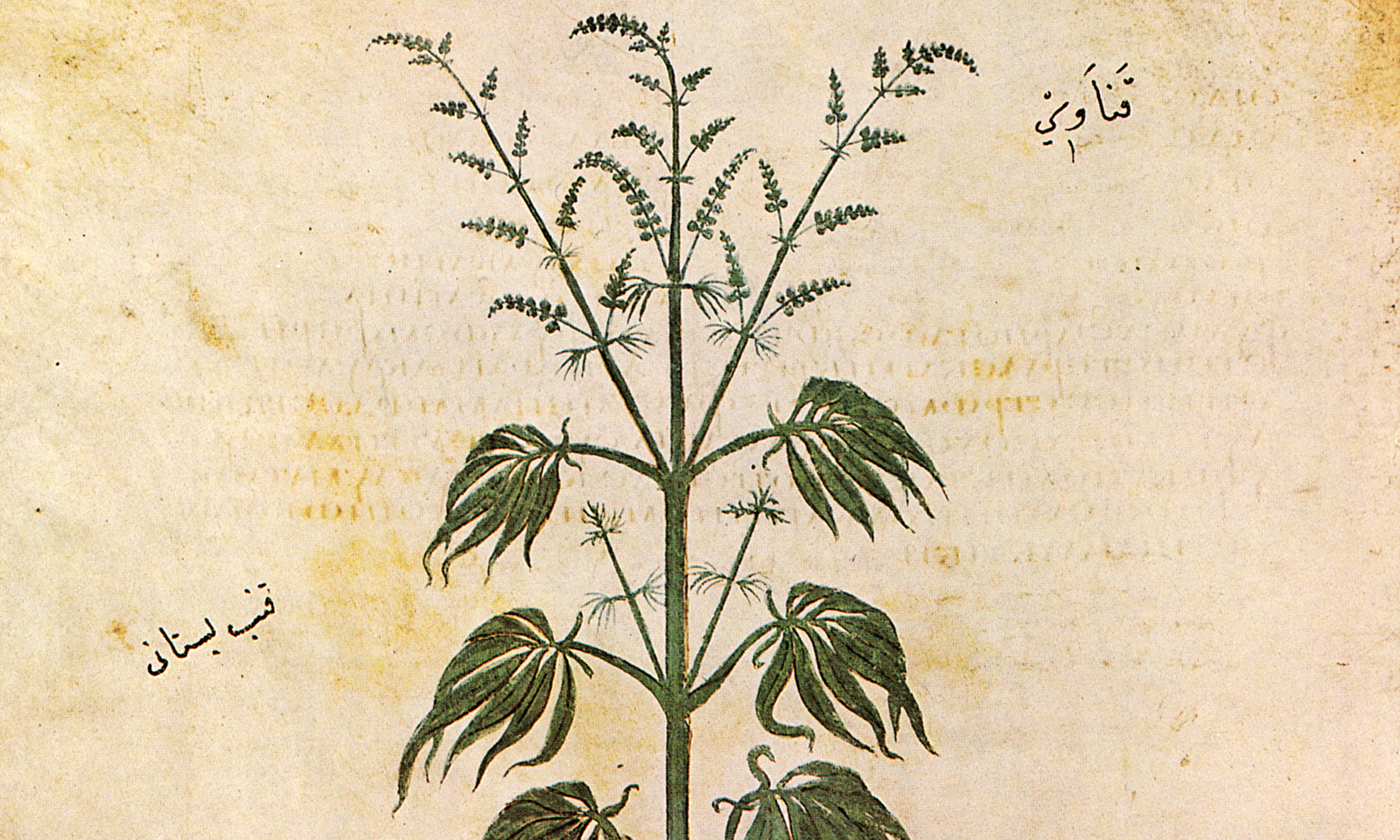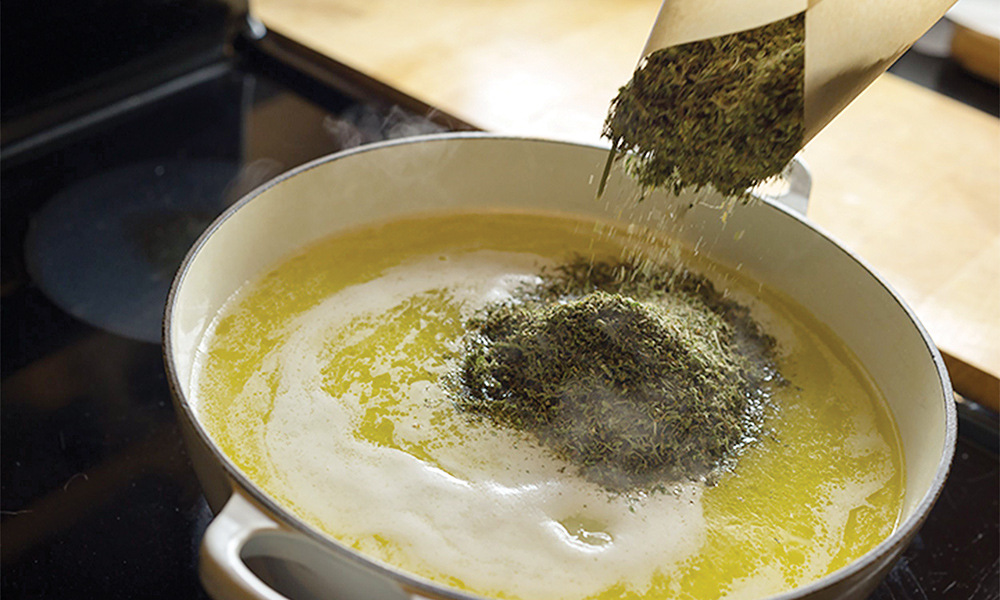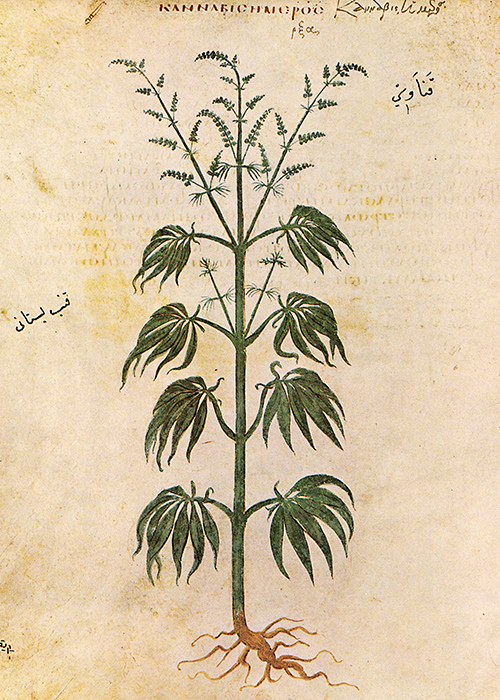
Edibles
A History of Eating Cannabis: A Taste Test That Led to Religion
An excerpt from “Pot in Pans: A History of Eating Cannabis” explains the theory that cannabis helped cave people invent religion — and perhaps much more.
During the Stone Age, humans began exploring their surroundings and figuring out how to survive, forming crude communities along fresh water sources and experimenting with eating the plants and animals they encountered. These humans would have had a hard time ignoring the cannabis plant, its pungent flowers dripping with resin, and ethnobotanists believe it was one of the very first plants they explored. The cavepeople tasted cannabis’s fresh green leaves, bitter flowers and nutty seeds. The thick sap coating the flowers, rich with THC, stuck to their fingers. When they licked it off, they discovered the plant’s ability to intoxicate. They were the first in a long line of hash eaters to come.
Today we understand that it was the cannabinoids in the sticky resin of those plants that got those early humans high by activating special human receptors that enhance the expression of FOXP2, a gene that facilitates speech and language development. For our ancestors, there was only an understanding that this plant could take their minds to new places and open up untapped avenues of thought. It gave them good ideas. Researchers Geoffrey Guy and John McPartland theorized that as cannabis coevolved alongside humans, it was primarily responsible for what historians call “the great leap,” the time when we began making tools, weapons and art, and working together in collectives.

Ethnobotanist Richard Evans Schultes’s theory is that ingesting those cannabis plants led early humans to invent religion. “Primitive man, trying all sorts of plant materials as food, must have known the ecstatic hallucinatory effects of hemp, an intoxication introducing him to another-worldly plane leading to religious beliefs,” Schultes and Albert Hofmann wrote in “Plants of the Gods” in 1979. “Thus, the plant early was viewed as a special gift of the gods, a sacred medium for communion with the spirit world.” Though it was seemingly discovered by accident, Robert C. Clarke and Mark D. Merlin wrote that the female cannabis flowers’ ability “to exude large amounts of readily apparent and easily collected psychoactive resin” was the plant’s “most evolutionary significant trait.”
Though valued for its nutritious seeds, cannabis’s psychoactive qualities may well have been the magic bond that motivated early humans to begin putting crops in the ground and continue to plant cannabis wherever they went. After observing that early African Pygmies learned to cultivate cannabis because they considered it an important tool for keeping the hunters soothed and amused during the long hours they spent stalking meat and fish, scientist and author Carl Sagan famously suggested it would be “wryly interesting if in human history the cultivation of marijuana led generally to the invention of agriculture, and thereby to civilization.” Sagan went on to observe: “The marijuana-intoxicated Pygmy, poised patiently for an hour with his fishing spear aloft, is earnestly burlesqued by the beer-sodden riflemen, protectively camouflaged in red plaid, who, stumbling through the nearby woods, terrorize American suburbs each Thanksgiving.”

As hunter-gatherers moved from place to place in search of food, they left behind campsites of rich compost where wild cannabis seeds germinated and flourished. Later, a vast, wandering Stone Age religio-complex of tribes seeking new lands and new consciousness brought cannabis, which they used as a spiritual tool, as they traveled farther and wider. Cannabis, Schultes wrote, “developed together with man as a multi-purpose economic plant: the source of a fibre, a narcotic, a medicine, an oil, and an edible fruit.”
As soon as they could figure out how to do so, humans domesticated cannabis and began breeding it to enhance useful traits such as elongated bast fibers, large seeds with high oil content and sometimes, copious narcotic resin. “Under the pressures of selection for these characters,” Schultes wrote, “cannabis began to reveal characters and combinations of characters not found in wild or presumed wild populations, a phenomenon that has occurred in every plant domesticated by man.”
Excerpted from the book “Pot in Pans: A History of Eating Cannabis” by Robyn Griggs Lawrence. Used by permission of the publisher Rowman & Littlefield. All rights reserved.
Originally published in the print edition of Cannabis Now. LEARN MORE



















